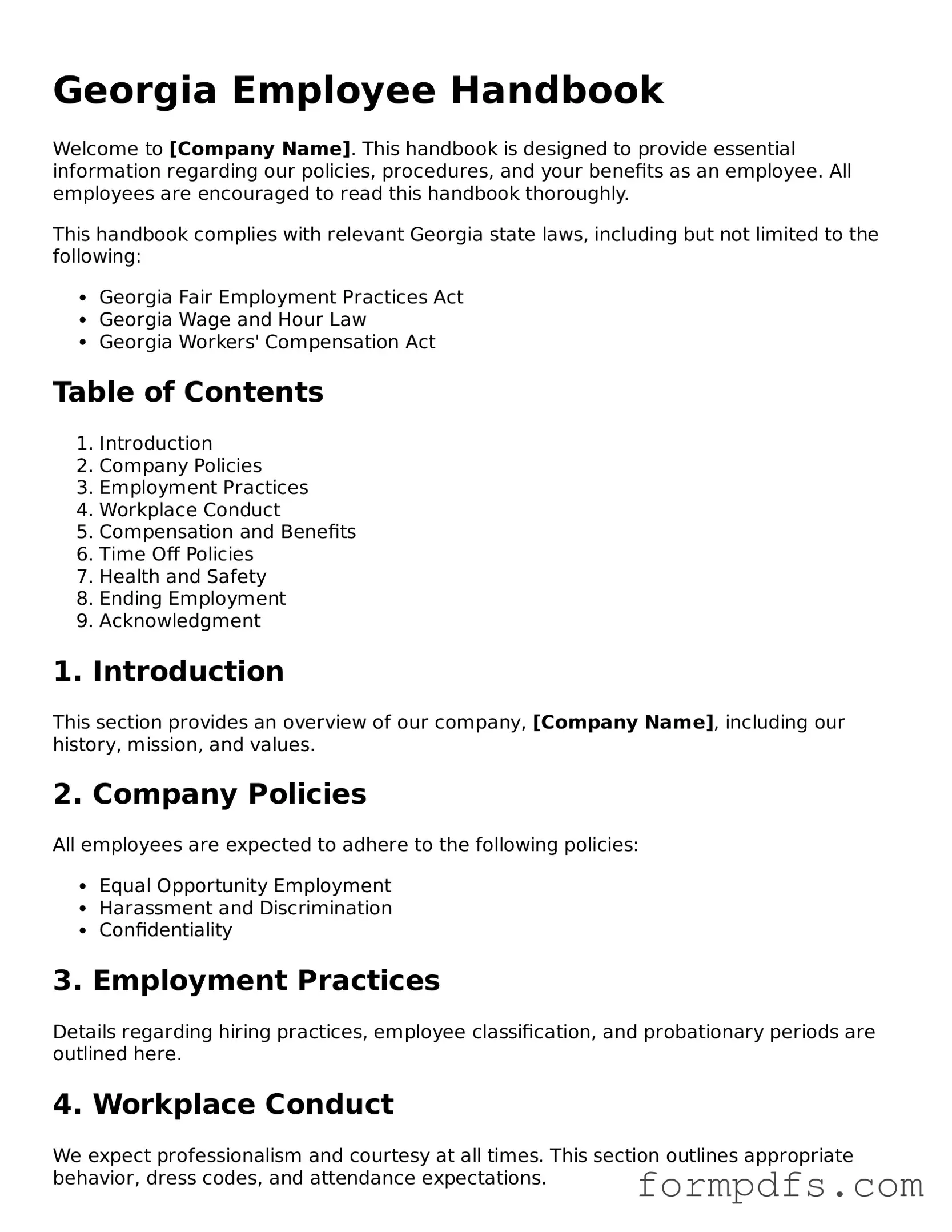What is the purpose of the Georgia Employee Handbook form?
The Georgia Employee Handbook form serves as a crucial document for employers and employees alike. It outlines the policies, procedures, and expectations within the workplace. This handbook helps ensure that all employees understand their rights and responsibilities, creating a clearer and more organized work environment. By providing this information, employers can foster a culture of transparency and fairness, which can ultimately lead to higher employee satisfaction and retention.
Who should have access to the Employee Handbook?
Every employee should have access to the Employee Handbook. It is essential for new hires to receive a copy during their onboarding process. Existing employees should also have access to the latest version, as updates may occur. This ensures that everyone is on the same page regarding company policies, benefits, and procedures. Employers should consider providing both digital and printed copies to accommodate all employees.
How often should the Employee Handbook be updated?
The Employee Handbook should be reviewed and updated at least annually. However, it’s important to make updates whenever there are significant changes in company policy, state or federal law, or workplace practices. Keeping the handbook current is vital for compliance and for maintaining an informed workforce. Regular reviews help to address any issues that may arise and ensure that all employees are aware of their rights and obligations.
What should I do if I have questions about the Employee Handbook?
If you have questions about the Employee Handbook, it’s best to reach out to your supervisor or the Human Resources department. They can provide clarification on any policies or procedures that may be unclear. It’s important to address any concerns promptly to avoid misunderstandings. Open communication is key to a healthy workplace, so don’t hesitate to ask for help if you need it.
